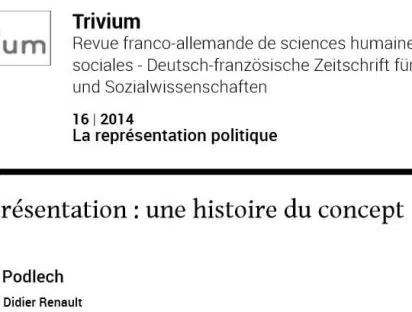 On Monday 22 June 2020, two news items were described in the media as being “supercheries” (in English, supercherie means a mixture of confidence trick and deception): the conclusions of the French Citizens’ Convention on Climate and Oxfam France’s report “CAC 40 : des profits sans lendemain ? Inégalités, climat : pistes pour bâtir l’entreprise du monde d’après” (CAC 40: profits with no tomorrow? Inequalities, climate: avenues for building the world’s next business) (1). Astonishing accusations, because the word designates deception and falsification of the truth – supercherie is a “deception or confidence trick, more or less skillfully calculated and executed, generally involving the substitution of the false for the true” (2) –, even mystification or farce. Its use deserves critical scrutiny.
On Monday 22 June 2020, two news items were described in the media as being “supercheries” (in English, supercherie means a mixture of confidence trick and deception): the conclusions of the French Citizens’ Convention on Climate and Oxfam France’s report “CAC 40 : des profits sans lendemain ? Inégalités, climat : pistes pour bâtir l’entreprise du monde d’après” (CAC 40: profits with no tomorrow? Inequalities, climate: avenues for building the world’s next business) (1). Astonishing accusations, because the word designates deception and falsification of the truth – supercherie is a “deception or confidence trick, more or less skillfully calculated and executed, generally involving the substitution of the false for the true” (2) –, even mystification or farce. Its use deserves critical scrutiny.
The Citizens’ Convention on Climate
In her column, broadcast on the French radio station Sud Radio, journalist Elisabeth Lévy expressed her scepticism about the proposals of the Citizen’s Convention on Climate (3). After denouncing the background to its conclusions – a “clever mix of punitive ecology and a planned and subsidised economy [that] advocates bans, regulations and taxes” – and considering that “the most damning thing is that all these media are pretending to take this white elephant seriously,” she described the idea of a referendum as “the height of supercherie.” The use of the verb to pretend is eloquent, as it refers to both pretending and concealment. These are part of the game played by the media. Elisabeth Lévy is not clear whether the same association of pretending and concealment is present in the work and proposals of the Citizen’s Convention on Climate, although she seems to suggest it. However, her use of the word supercherie raises two difficulties. Firstly, the object of its criticism does not seem to correspond to the idea of a “deception that implies the substitution of the false for the authentic” (4). It is difficult to identify where the false and the inauthentic lie in this case. Of course, it is the art of any supercherie to conceal them, but the work of the Citizen’s Convention on Climate is marked by a high degree of transparency and – not insignificant fact – by the intervention of a large number of protagonists. The second difficulty relates to subtlety. For subtlety, which presupposes skill, finesse and boldness, is one of the ingredients of supercherie. Indeed, this is defined as “deception carried out with finesse,” “calculated and executed with subtlety” (5). But where is the subtlety here given the transparency and the number of protagonists, but also the media coverage and politicisation of the Citizen’s Convention on Climate These factors leave little room for the subtlety which is intrinsic to supercherie (6).
Oxfam France report
Let us now consider the report by Oxfam France. Its publication prompted a harsh article in the newspaper L’Opinion (7). The criticism was not so much about its content (it is a question of its “more than dubious methodology”) as about the fact (for the author of the article) that the “beautiful principles” defended by the report are “totally out of step with the practices of the NGO.” Therein lies the supercherie. The content of the text of L’Opinion is essentially about Oxfam’s organisation and financing, and, on a more ideological level, about the “selectivity” of “its indignations.” One could consider that this angle of attack has little to do with the content of the report, which, subject to the validity of its methodology (which we cannot judge), presents proposals based on a lot of data. But the idea of supercherie makes it possible to establish a link between identity and acts. If one doubts a person’s identity, one doubts their actions. It is in this space between identity and acts that supercherie takes place. This sentence from L’Opinion attests to this: “Beautiful principles in total harmony with the practices of the NGO.” In short, the public identity (that produced by the “beautiful principles”) differs from the identity revealed by the functioning of the organisation. But this type of supercherie poses two problems. The first is that of its author. If a supercherie “emanates” from the functioning of a collective, itself subject to external constraints, the author may not be easily identifiable. Because it is necessarily intentional, the supercherie requires an author. The second problem relates to the possibility for a person to forge their identity, for example by taking public positions contrary to their convictions. It is doubtful, indeed, that such dissonance can last for long. Christian Moncelet addressed this difficulty in connection with La Fontaine’s fable in which a wolf disguises itself as a shepherd to catch the sheep, but fails to forge its voice:
“Whoever wants to escape from his nature risks a great deal, whether this momentary escape is done magically or by mimetic will. The deception of the wolf turned shepherd lasts only a brief moment. When the impostor is unmasked, he is ridiculed… [The] fox who has assumed the personality of the wolf […] gives the change for a few moments by terrorising the people around him but obeys his instinct at the slightest crow of a rooster.” (8)
If concealing one’s real interests, or intentions, is a common phenomenon, concealing one’s identity is another matter. In Moncelet’s words, this kind of supercherie only lasts for a short time. One could, of course, reply that the article in L’Opinion was aimed precisely at putting an end to it, but this argument is insufficient.
Conclusion
Let us summarise the objections to the two suggestions of supercherie taking place. In the first case, this qualification is hardly compatible with the transparency of the Citizen’s Convention on Climate, as well as the number and diversity of the people involved – and it lacks the subtlety of any supercherie. In the second case, supercherie cannot be considered in the absence of the author, and the counterfeiting of his identity is dangerous, because the person who practises it runs the risk of being unmasked. To defend the existence of a supercherie, one must understand the plan devised by a clearly identified author. It is the hallmark of a supercherie that it is intentional and can be unmasked. Moreover, a supercherie is always unmasked. If it is not, it is because it is ignored and it has succeeded. But therein lies the rhetorical interest of supercherie. When you expose it publicly, for example in the media, the masks come off. However, even if what is at issue does not fit the concept of supercherie, invoking the word does have an effect. In a world marked by post-truth, fake news or detox columns, its use, even approximate or inappropriate, is not surprising. Alain Anquetil Article updated on 27 June 2020. (1) The final report of the Citizen’s Convention on Climate was handed over on Sunday 21 June 2020 to the Minister of Ecological and Solidarity Transition, Elisabeth Borne. The report “CAC 40: des profits sans lendemain ? Inégalités, climat : pistes pour bâtir l’entreprise du monde” was published by Oxfam France and BASIC (Bureau d’Analyse Sociétale pour une Information Citoyenne). (2) Source: CNRTL. (3) « Le regard libre d’Elisabeth Lévy – Convention Citoyenne pour le Climat, Sommet de la supercherie », Sud Radio, 22 June 2020. (4) Dictionnaire historique de la langue française Le Robert, 4th edition, 2010. (5) Dictionnaire de la langue française, par Emile Littré, Vol. 4, Librairie Hachette, 1874, and Grand Larousse de la langue française, Vol. 6, Librairie Larousse, 1989. (6) The supercherie is more easily conceived as an individual piece of work, but it can be collective. For example, Marie de Rasse uses this word to describe a collective strategy employed by Lacedemonian women which was described by Christine de Pizan in La Cité des Dames (M. de Rasse, « Travestissement et transvestisme féminin à la fin du Moyen Âge », Questes : Revue pluridisciplinaire d’études médiévales, 25, 2013, pp. 81-98). (7) « Oxfam, les dessous d’une supercherie », L’Opinion, 22 June 2020. (8) C. Moncelet, « Répétition et humour dans les Fables de La Fontaine » Études littéraires, (2-3), 2007, pp. 127-143. [cite]




